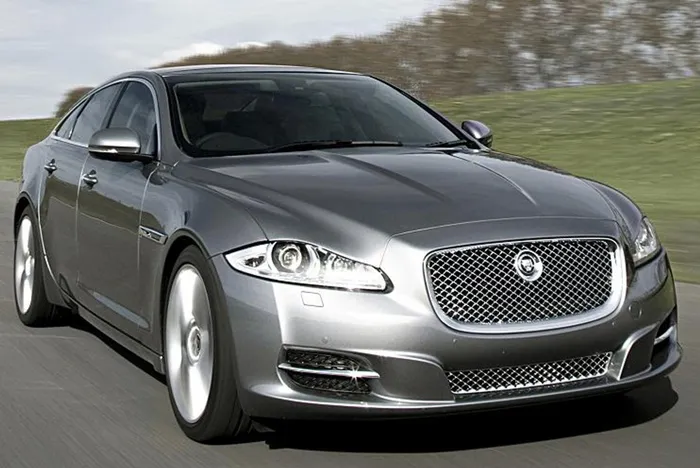Jaguar XJ: British big cat, potent and pedigreed

As I write this I'm listening to a 'Kings of Leon' album. This is unusual because playing music usually disrupts what passes for the creative process in my head. This time, though, the thoughts it evokes overcome that because it brings back to glorious life my drive last week in the new Jaguar XJ.
Really? Isn't a luxury-sedan Jaguar more Celine Dion or even the latest Classic FM compilation? Well, playing something gritty and rousing through the Jaguar's stupendous sound system is just one way to shift all sorts of residual prejudices about big Jags and their place in car culture.
You may have a more pressing question, though. Which is: does this sleek, fastback sedan look like a Jaguar? Well, it certainly doesn't do what the previous XJ did, which was to reprise yet again the look of the first XJ of 1968.
That obsession with retro has no place in Jaguar's corporate corridors today. "Jaguars should be modern cars," says design director Ian Callum. "We should understand the values that made the original XJ great but we should not copy them."
The XJ hints at a bigger, airier, more delicate XF, but is quite different in detail. It has roof pillars which appear slender, not least because the rear ones are blacked-in to look like tinted glass and the rear lights wrap over the rear wings. They contain angled lighting elements intended to resemble the scratches of a cat's claws; these seem a gimmick at first, but soon you see why Callum incorporated what he views as his favourite XJ part.
"You have to exaggerate a design idea 10 or 20 percent beyond the comfort zone," he says, "otherwise it soon becomes too safe. It will take people a while to come to terms with it, but that's a good thing."
Seen in its natural habitat, the XJ is truly dramatic. It looks assertive, confident and unlike any rival, especially a sober-suited German one. The drama continues inside, helped by the light from the glass roof and the sort of sumptuous materials you would find in a Rolls-Royce or a Bentley.
Now see the instruments, high-resolution images on a screen rather than the chrome-and-glass dials they appear to be. Then there's the central screen with its two layers of differently orientated pixels, so the driver can see the usual information while the front passenger simultaneously watches TV or a DVD.
EACH HAS A ZF AUTO...
Underneath all this is an aluminium structure derived from the previous XJ that enables this hefty car to weigh much the same as the smaller, but steel, XF. The engines are the same as those of the XF - a three-litre, V6 diesel with twin sequential turbos and 204kW (from £53 755), a five-litre, 290kW V8 with direct injection, and a supercharged version of that with 380kW for the top, £87 455 Supersport model.
Each has a six-speed ZF auto transmission with paddle-shifters.
Central to the notion of a Jaguar is refined progress with the promise of potency and the XJ does it brilliantly. There's a sense of precise, delicate connectedness with the road and a driver-involving, mass-defying agility. The miraculous part is that this is combined with the suppleness and grace of motion that has long been a Jaguar speciality.
As expected, the engines I tried were magnificent. The latest turbo-diesel with its 600Nm of torque hurls the XJ along with extraordinary nonchalance. The supercharged Supersport, however, is a truly joy-giving machine. It still rides absorbently over bumps and can play the luxury car with its engine lazily burbling but one squeeze of the accelerator brings a deep, potent throb and a torrent of overtaking energy.
...AND IT'S BRITISH
This is a very rapid Jaguar, able to reach 100km/h in 4.9sec and here you can really enjoy manual paddle-shifts and the XJ's remarkable dynamics. Pressing the chequered-flag button loosens the stability control and firms the dampers for a yet more engaging drive but even then the ride never descends into turbulence.
So that's the new XJ, a car that feels special in the way its German rivals do not. It turns heads and it's British. Even in today's globalised world, that last part is especially pleasing.
THE RIVALS
Audi A8 3.0 TDI quattro:
Latest version builds on Audi's quality feel and promises a more invigorating and comfortable drive. As good as XJ? We'll see.
BMW 730d SE:
Obvious choice if considering a 7 Series with lower CO2 than the XJ and easy, muscular pace. Lacks the visual interest and balletic dynamics of the Jaguar.
Mercedes-Benz S350 CDI:
A three-litre engine despite its misleading 350 name. BlueEfficiency credentials but less power and higher CO2 than XJ. Good, but others do it better.